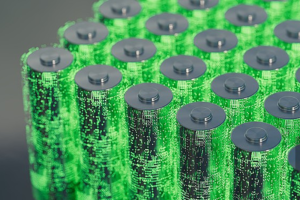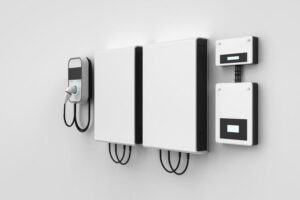As a clean and renewable energy source, Wind Power Generator has developed rapidly in recent years. However, the applicability of wind turbines is not the same under all geographical conditions, and needs to be evaluated and selected according to different geographical environments.
1. Wind Power Generator: Applicability under different terrain conditions
Terrain conditions have a significant impact on the power generation efficiency and safety of wind turbines.
a. Mountainous terrain:
Mountainous terrain often has higher wind speeds and wind energy density, which is suitable for installing wind turbines. However, mountainous terrain also has some challenges, such as:
Complex terrain:
Mountainous terrain is complex, and detailed wind resource assessment and site selection are required to find a suitable location for wind turbine installation.
Geological conditions:
The geological conditions in mountainous areas are complex, and geological exploration is required to ensure the stability of the foundation of wind turbines.
Difficult transportation: The roads in mountainous areas are rugged, and it is difficult to transport wind turbine equipment and materials.
b. Plain terrain:
Plain terrain has relatively low wind speeds, but the wind direction is relatively stable, which is suitable for installing wind turbines. However, there are also some challenges in plain terrain, such as:
Low wind speed:
The wind speed in plain areas is relatively low, and larger wind turbine blades or higher towers are required to obtain sufficient power.
Land use: Plain areas are rich in land resources, and reasonable land use planning is required to avoid affecting agricultural production.
Visual impact: Plain areas have a wide field of vision, and the visual impact of wind turbines is large, so landscape design is required to reduce the impact on the environment.
c. Offshore terrain:
Offshore wind energy resources are abundant and stable, making it an ideal installation location for wind turbines. However, there are also some challenges in offshore terrain, such as:
Complex sea conditions:
The offshore environment is complex, and marine environmental assessments are required to ensure the safety of wind turbines.
Construction difficulties:
Offshore construction is difficult, requiring special construction ships and technologies, and the cost is high.
Maintenance difficulties:
Offshore wind turbines are difficult to maintain, requiring special maintenance ships and technologies.
2. Wind Power Generator: applicability under different climatic conditions
Climatic conditions have an important impact on the power generation efficiency and operating life of wind turbines.
a. Cold climate:
In cold climate areas, wind turbine equipment needs to have cold resistance, for example:
Antifreeze measures:
Key components need to be treated with antifreeze to avoid equipment damage caused by low temperature.
Anti-icing measures:
Blades need to be treated with anti-icing to avoid ice and snow covering and affecting power generation efficiency.
Snow and wind resistance:
It is necessary to ensure that wind turbines can withstand strong winds and snowfall to avoid equipment damage caused by snow and wind.
b. Hot climate:
In hot climate areas, wind turbine equipment needs to have high temperature resistance, for example:
Heat dissipation measures:
Key components need to be treated with heat dissipation to avoid equipment damage caused by high temperature.
Anti-corrosion measures:
Equipment needs to be treated with anti-corrosion to avoid corrosion caused by high temperature and humid environment.
Sand and wind resistance:
It is necessary to ensure that wind turbines can withstand strong winds and dust to avoid equipment damage caused by sand and wind.
c. Humid climate:
In humid climate areas, wind turbine equipment needs to have moisture-proof properties, for example:
Moisture-proof measures:
Key components need to be treated with moisture-proof treatment to avoid equipment damage caused by moisture.
Anti-corrosion measures:
Equipment needs to be treated with anti-corrosion treatment to avoid corrosion caused by humid environment.
Lightning protection measures:
Equipment needs to be treated with lightning protection to avoid equipment damage caused by lightning strikes.
3. Wind Power Generator: applicability under different environmental conditions
Environmental conditions have an important impact on the site selection and operation of wind turbines.
a. Environmental pollution:
Environmental pollution can lead to reduced efficiency and shortened life of wind turbines. For example:
Air pollution:
Air pollution can cause dust accumulation on wind turbine blades, affecting wind energy capture efficiency.
Water pollution:
Water pollution can cause corrosion of wind turbine foundations, affecting equipment safety.
Noise pollution:
Noise pollution can cause unstable operation of wind turbines and affect power generation efficiency.
b. Ecological environment:
The ecological environment also has an important impact on the site selection and operation of wind turbines. For example:
Bird protection:
The rotating blades of wind turbines may cause harm to birds. It is necessary to investigate the migration routes and habitats of birds and take corresponding protection measures.
Bat protection:
The rotating blades of wind turbines may cause harm to bats. It is necessary to investigate the migration routes and habitats of bats and take corresponding protection measures.
Landscape protection:
Wind turbines have a large visual impact, and landscape design is needed to reduce the impact on the environment.
c. Social environment:
The social environment also has an important impact on the construction and operation of wind turbines. For example:
Public acceptance:
The construction of wind turbines needs to be recognized and supported by local residents. It is necessary to communicate and publicize fully to understand the opinions and needs of the public.
Land expropriation:
The construction of wind turbines requires the expropriation of land, and reasonable land use planning is required, as well as compensation and resettlement work.
Laws and regulations:
The construction and operation of wind turbines need to comply with relevant laws and regulations, and environmental impact assessments need to be conducted and relevant licenses obtained.
4.Wind Power Generator: key factors in suitability assessment
a. Wind resource assessment:
The power generation of wind turbines depends on wind speed and wind energy density. A detailed wind resource assessment is required to select areas with abundant wind resources, stable wind speed and suitable wind direction.
b. Topographic and geological condition assessment:
The site selection of wind turbines needs to consider topographic and geological conditions, and select areas with stable geology, solid foundation and convenient transportation.
c. Environmental impact assessment:
The construction of wind turbines requires environmental impact assessment to assess the impact on the environment and take corresponding measures to protect the environment.
d. Social impact assessment:
The construction of wind turbines requires social impact assessment to understand the opinions and needs of the public, communicate and publicize, and obtain public recognition and support.
e. Economic benefit assessment:
The construction of wind turbines requires economic benefit assessment to analyze the project’s return on investment and ensure the economic feasibility of the project.

5. Wind turbines: future direction of applicability expansion
In the future, with the advancement of technology, the applicability of wind turbines will be further expanded.
a. New wind turbine technology:
For example, new wind turbine technologies such as vertical axis wind turbines and floating wind turbines will be able to be installed under more complex terrain conditions, expanding the application scope of wind turbines.
b. Intelligent wind turbines:
For example, intelligent control systems, intelligent monitoring systems, etc. will be able to improve the power generation efficiency and operation safety of wind turbines and adapt to more complex environmental conditions.
c. Complementarity of wind power generation with other energy sources:
For example, the complementarity of wind power with other renewable energy sources such as solar energy and hydropower will be able to improve the stability and reliability of energy supply and expand the application scope of wind turbines.
Summary:
The applicability of wind turbines is affected by many factors, including terrain conditions, climate conditions, environmental conditions, social environment, etc. To evaluate the applicability of wind turbines, it is necessary to comprehensively consider various factors and make scientific evaluations and selections. In the future, with the advancement of technology, the applicability of wind turbines will be further expanded to provide humans with cleaner, more efficient and sustainable energy.
Wind Power Generator:How Do Wind Turbines Work?





